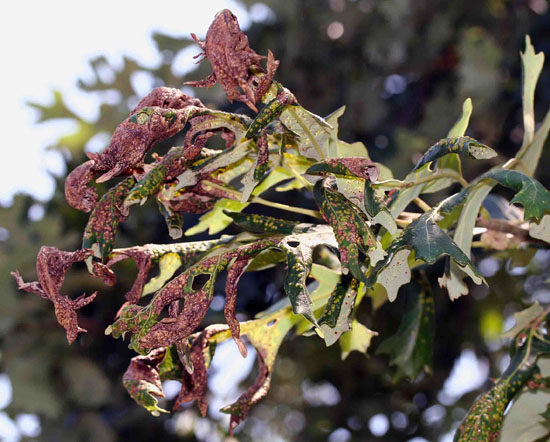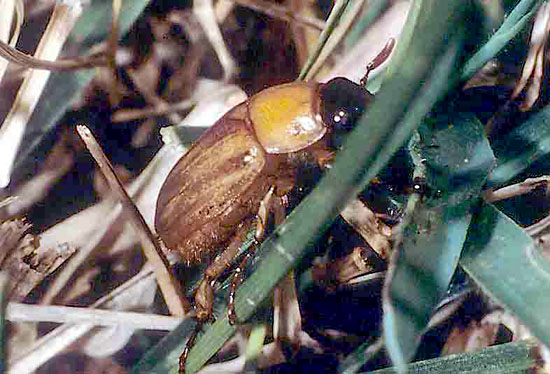Issue 12, July 20, 2015
Scouting Report
Jumping Oak Plant Gall infestations are more common this year than usual. These galls appear first as green pimples on white and bur oak leaves. Many have now turned brown. Heavily infested leaves curl longitudinally and turn reddish-brown, being obvious on heavily infested trees. Later in the summer, mature galls tend to break loose from the leaves and fall to the ground. On a patio or other hard surface, they quiver and jump slightly, hence their name. It is suspected that the gall wasp lays her eggs on dormant leaf buds, allowing them to appear very early on the leaves.

Jumping oak gall infested leaves.
Masked Chafer beetles are flying throughout the state. They lay their eggs in drier soil than Japanese beetles. It seems that Japanese beetles out compete them as the masked chafer white grubs disappear in moist turf areas. With reduced numbers of Japanese beetles in east central Illinois, we have seen masked chafers take back areas where the Japanese beetles apparently pushed them out. This is likely to occur in other areas of the state where Japanese beetle numbers have been reduced by drought and cold winters. Masked chafer white grubs survive in drier soil than Japanese beetles and are not reduced as much by deep freezing soils as they tunnel deeper than Japanese beetle grubs. Masked chafer white grubs cause the same type of turf damage at the same time as those of Japanese beetle. They are controlled by the same insecticides.

Masked chafer adult.
Fall Webworm second generation is numerous in southern Illinois and will appear soon in central Illinois. The first and only generation will hatch within a couple of weeks in northern Illinois. Although the large silk tents are obvious, leaf feeding is not usually a health problem to trees at this time of year. However, if enough foliage is removed that trees releaf, the new leaves are unlikely to restore the energy spent to produce them, causing a reduction in tree health.

Fall webworm damage to crabapple.
(Phil Nixon)
Author:
Phil Nixon